Results 9,051 to 9,060 of 12096
Thread: Anandtech News
-
01-11-19, 11:06 AM #9051
Anandtech: Dell at CES 2019: Alienware 55-Inch 4K 120 Hz OLED Gaming Monitor Showcase
In a surprising move Dell demonstrated a prototype of its Alienware 55 OLED display for gamers at CES. The 55-inch OLED monitor features a 120 Hz adaptive refresh rate and because of high contrasts that the OLED technology provides, the display promises to be one of the most impressive displays released this year. In the meantime, it is still in development and its price will likely be well beyond reach of most gamers.
The Alienware 55 display relies on an Ultra-HD (3840×2160) OLED panel that boasts with vivid colors, deep inky blacks, an extremely high contrast ratio (~100,000:1), fast response time (~0.1 ms), wide horizontal viewing angles, and an up to 120 Hz adaptive refresh rate (which is what sets the monitor apart from OLED UHDTVs). The display can reproduce up to 95% of the DCI-P3 color space, which is oddly low for an OLED monitor, but which is explainable as the device is still in development.
(Photo from Engadget)In fact, while Dell says that the Alienware 55 display is set to support an adaptive refresh rate technology, the manufacturer does not disclose whether it will eventually support AMD’s FreeSync/FreeSync 2 or NVIDIA’s G-Sync/G-Sync HDR when it is finalized. As for connectivity, the monitor features DisplayPort 1.4 and HDMI 2.1 (with the latter possibly pointing not only to a new cable requirement, but also to variable refresh rate (VRR) and other HDMI 2.1 features support).
It is noteworthy that to make design of the Alienware 55 attractive for gamers (if a 4K 120 Hz OLED panel is not enough), the monitor has programmable RGB lighting on the back.
Dell currently expects to start sales of its Alienware 55 gaming OLED monitor sometimes in the second half of the year. Pricing of the device is currently unknown, yet one can guess that because it uses a 55-inch Ultra-HD OLED panel with a 120 Hz refresh rate, this is going to be an ultra-premium product competing against NVIDIA’s BFGD (Big Format Gaming Display) LCDs.
What is notable is that Dell no longer sells its UltraSharp UP3017Q OLED monitor, so the company might be reviewing its OLED offerings in general and the 55-inch panel could be used not only for the company’s gaming solution.
Related Reading:
- Dell’s Ultrasharp 30-inch 4K OLED Now On Sale: UP3017Q for $3500
- Dell Demonstrates 30-inch 4K OLED Display
- JOLED Demos 21.6-Inch OLED Monitor for Gamers
Sources: Tom’s Hardware, Engadget
More...
-
01-11-19, 12:00 PM #9052
Anandtech: AMD: “No Chiplet APU Variant on Matisse, CPU TDP Range same as Ryzen-2000”
One of the big questions coming out of AMD’s CES announcements was if its new CPU design, codenamed Matisse and which enables two chiplets and an IO die on a single package, would support one of those chiplets being graphics based in order to make an APU. In our discussions with AMD, we received confirmation that this will not be the case.
The new Matisse design is the platform for AMD’s next generation of desktop processors. The layout shown at CES this year represented the design as having a single IO die, about 122.6 mm2 and built on GlobalFoundries 14nm, paired with a chiplet die, about 80.8 mm2, containing eight cores and built on TSMC’s 7nm. There is obviously space on that package for another CPU chiplet, and there has always been questions if the chiplet design is amenable to using a graphics.
AMD stated that, at this time, there will be no version of the current Matisse chiplet layout where one of those chiplets will be graphics. We were told that there will be Zen 2 processors with integrated graphics, presumably coming out much later after the desktop processors, but built in a different design. Ultimately APUs are both mobile first as well as lower cost parts (usually), so different design decisions will have to be made in order to support that market.
This doesn't rule out a future processor using chiplet graphics, this is just for Matisse.
Our contacts at AMD also discussed the TDP range of the upcoming range of Matisse processors. Given AMD’s definition of TDP, relating to the cooling performance required of the CPU cooler, the range of TDPs for Matisse will be the same as current Ryzen 2000-series processors. This means we could see ‘E’ variants as low as 35W TDP, all the way up to the top ‘X’ processors at 105W, similar to the current Ryzen 7 2700X. We were told that the company expects the processors will fit within that range. This should be expected on some level, given the backwards compatibility with current AM4 motherboards on the market with a BIOS update.
Read our announcement on the early preview of the Matisse processors here:
More...
-
01-11-19, 02:28 PM #9053
Anandtech: Samsung at CES 2019: 219-Inch and 75-Inch Micro LED Ultra-HD TVs Demonstra
Samsung showcased its new ultra-large television with a 219-inch diagonal at CES 2019. Dubbed “The Wall”, the TV uses the company’s Micro LED technology that offers very high brightness and deep inky blacks, essentially competing against OLED TVs when it comes to picture quality. Separately, Samsung introduced its 75-inch Micro LED Ultra-HD TV aimed at general consumers.

The new 219-inch “The Wall” TV features an unknown resolution that is higher than 4K as well as 2,000 nits brightness. The television runs an unknown Samsung processor (presumably a version of the company’s Quantum Processor 8K that powers QLED-based Q900-series 8K UHDTVs) that supports the manufacturer’s AI upscaling tech along with other premium capabilities. Just like the Q900, “The Wall” can blend with surroundings to match style of the interior, a feature that Samsung is especially proud of. The TV can be controlled using a special tablet.
Meanwhile, the company’s prototype 75-inch Ultra-HD TV called “The Window” features a 4K resolution as well as a peak brightness of 1,000 nits. When “The Window” hits the market, its peak brightness will be increased to 4,000 nits, which is in-line with the Q900-series.
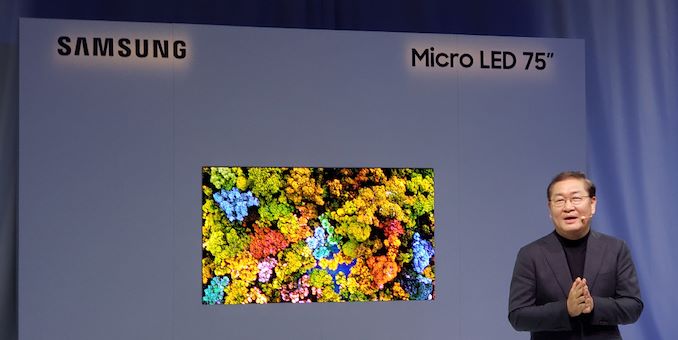
As the name implies, televisions based on the Micro LED technology use tens of millions of individually-controlled tiny LEDs (25M in case of “The Window”) that do not require any backlighting, which is why they can offer a very high contrast ratio. Samsung hopes that its Micro LED technology will be free of issues that OLEDs are known for (including off-axis color shifting, ghosting, burn-in, etc.), but will retain all of their advantages (brightness, contrast, fast response time, wide viewing angles, etc). As an added bonus, Micro LED screens do not need any bezels and can be made incredibly thin.

Samsung demonstrated its first 146-inch “The Wall” TV featuring 1,600 nits brightness at last year’s CES and released in mid-2018. The price of the device is unknown and it is believed that it is available to select customers only.
Related Reading:
- Samsung Starts to Take Pre-Orders on 85-Inch Q900 8K UHDTV
- Samsung Begins Sales of 65-Inch Q900R 8K UHDTV in the UK
- Samsung Announces CRG9: A 49-Inch Curved 5K 120 Hz FreeSync 2 Monitor
Sources: Samsung, Tom’s Guide, Tom’s Hardware, WhatHiFi
More...
-
01-11-19, 02:28 PM #9054
Anandtech: CES 2019: PowerColor & VisionTek Launch Compact eGFX Solutions
The majority of Thunderbolt 3-enabled external chassis for video cards are rather big in order to accommodate high-end graphics adapters that tend to feature large PCBs and cooling systems. Meanwhile, not everyone needs a 300 W GPU and has enough space for a large box on their desk, but finding a compact and suitable eGFX enclosure may be problematic as the choice is very limited. Fortunately, PowerColor and VisionTek have just released three of such products.
While we are talking about three different SKUs, PowerColor’s Thunderbolt 3 eGFX Box 180F and Thunderbolt 3 eGFX Box 240F as well as VisionTek’s Thunderbolt 3 Mini eGFX (240 W) enclosures actually rely on the same TBX-180/240FU chassis developed by PowerColor and originally showcased at Computex in June, 2018. There are important differences though: PowerColor sells its boxes outfitted with its Radeon RX 560 and Radeon RX 570 graphics adapters, whereas VisionTek offers just an enclosure.
Measuring 215×153×68 mm, the said eGFX chassis can accommodate double-wide video cards that feature a 175 mm length and a 131 mm height, which generally limits compatibility to mainstream and Mini-ITX graphics adapters that have appropriate power ratings.
PowerColor’s Thunderbolt 3 eGFX Box 240F (with Radeon RX 570 inside) and VisionTek’s Thunderbolt 3 Mini eGFX boxes equipped with a 240 W PSU feature a GbE connector and a dual-port USB 3.0 hub. To provide dedicated lanes for GPU as well as USB and GbE controllers, these chassis feature two Thunderbolt 3 controllers. Meanwhile, the Thunderbolt 3 eGFX Box 180F does not feature any additional ports and therefore uses a simpler architecture.
VisionTek’s Thunderbolt 3 Mini eGFX is currently available directly from the company for $350 and is set to become available from Dell and Lenovo in the near future with more retailers to follow. PowerColor’s new compact eGFX solutions will hit the market in the coming weeks.Compact eGFX Enclosures from PowerColor & VisionTek PowerColor Mini
Thunderbolt eGFX Box 180FPowerColor Mini Pro
Thunderbolt eGFX Box 240FVisionTek Thunderbolt 3 Mini eGFX Integrated GPU Radeon RX 560 4 GB Radeon RX 570 8 GB - PSU 180 W 240 W Dimensions 215×153×68 mm Max GPU Size 175×131×38 mm Additional Features - GbE
Dual-Port USB 3.0 hubPower Delivery to Laptop 15 W 15 W - 45 W
Related Reading:
- PowerColor Shows Off Tiny Thunderbolt 3 External GPU Boxes Money Can’t Buy
- Sapphire’s GearBox Thunderbolt 3 eGFX Box w/ 500W PSU Now Available
- Razer Launches Core X TB3 eGFX Enclosure: Cost-Down Version Complements Core v2
- ASUS Launches XG Station Pro TB3 eGFX Chassis: 330 W, 2.5-Wide Cards
- ZOTAC Unveils AMP Box and AMP Box Mini eGFX TB3 Chassis
Sources: PowerColor, VisionTek
More...
-
01-11-19, 03:47 PM #9055
Anandtech: CES 2019: MSI Unveils GUNGNIR 100 Chassis and Vigor GK60 Mechanical Gaming
MSI has added to its ever-growing range of peripherals with the new Vigor GK60 gaming keyboard. CES 2019 also marks the unveiling of its Norse mythology inspired GUNGNIR 100 chassis aimed at gamers looking to add some RGB sparkle to their system.
MSI GUNGNIR 100 Chassis
MSI's new GUNGNIR 100 case is named after the Norse God Odin's legendary spear and looks to wield plenty of RGB LED lighting. The GUNGNIR 100 allows users to install motherboards up to E-ATX and is 510 x 227 x 525mm (DxWxH) in size; it also weighs 9.3 Kg. The weight is likely a consequence of MSI opting to use a 4 mm thick tempered glass side panel. Users looking for cooling options will be happy to know the GUNGNIR 100 has an ample cooling layout internally with space for three 140/120 mm fans in the front, three 120 mm or two 120 mm fans in the top, a single 140/120 mm in the rear and comes pre-installed with three 120 mm RGB fans.
On the front panel IO, MSI has included two USB 3.0 ports but given that this is 2019, there is no mention or scope of USB 3.1 Gen2 or even front panel Type-C connectivity available. The current availability and pricing are unknown as of yet, but we expect MSI to unveil these details shortly.
MSI Vigor GK60 Gaming Keyboard
The new MSI Vigor GK60 gaming keyboard uses Cherry MX Red mechanical switches which is a linear switch and has an actuation force of 45 cN. Surrounding the keys is an aluminium frame and key count is dependant on which region and language are purchased; 104, 105 and 109 key variants for reference. The MSI Vigor GK60 has red LED backlighting underneath the keys and offers users a variety of customizable lighting effects from steady, wave and horizon, all the way to radar and reactive. These can be customized through the MSI Gaming Center application but it should be noted that the Vigor GK60 does not support RGB.
Supplied with the Vigor GK60 gaming keyboard is a two metre long USB cable and comes pre-installed with four metal WASD keycaps. This includes a keycap puller to allow users to install their own. As it stands there is no information available in regards to pricing and availability, but the MSI Vigor GK60 is expected to hit retail channels shortly.
More...
-
01-11-19, 07:04 PM #9056
Anandtech: ASUS at CES 2019: ProArt PA32UCX 4K Monitor with 1000-Zone FALD Unveiled
ASUS introduced its new flagship professional display at CES. The ProArt PA32UCX supports everything that one might expect from a 2019 professional monitor, including a 4K Ultra-HD resolution along with support of the DCI-P3 and Rec. 2020 color spaces as well as Thunderbolt 3 connectivity, but its key feature is a unique FALD backlighting with 1000 zones.
The ASUS ProArt PA32UCX monitor is based on a 10-bit 32-inch IPS panel that can reproduce 1.07 billion colors and features a 3840×2160 resolution presumably at 60 Hz. The custom panel is outfitted with an exclusive Mini LED-based backlighting that enables 1200 nits peak brightness as well as a 1000-zone full array local dimming (today’s leading-edge LCDs feature a 384-zone FALD) as well as 0.003 - 0.001 nits lowest luminance. To control the backlighting, ASUS had to order a custom display scaler and then test it for months to hit the right contrasts, color uniformity, and other targets it needed.
The manufacturer says that the ProArt PA32UCX display covers 97% of the DCI-P3 as well as 89% of the Rec. 2020 color spaces used for video post-production nowadays. Besides, it supports HDR10 as well as hybrid log gamma (HLG) HDR formats, but ASUS says nothing about Dolby Vision support. Since the monitor is only announced formally, ASUS does not disclose any details regarding its internal 3D LUT (look-up table) for HDR color gradations, but I would expect something very professional grade (e.g., 24-bit, which is more accurate than 14-bit). Meanwhile, ASUS says that the ProArt PA2UCX not only meets, but exceeds requirements for VESA’s DisplayHDR 1000 logo.
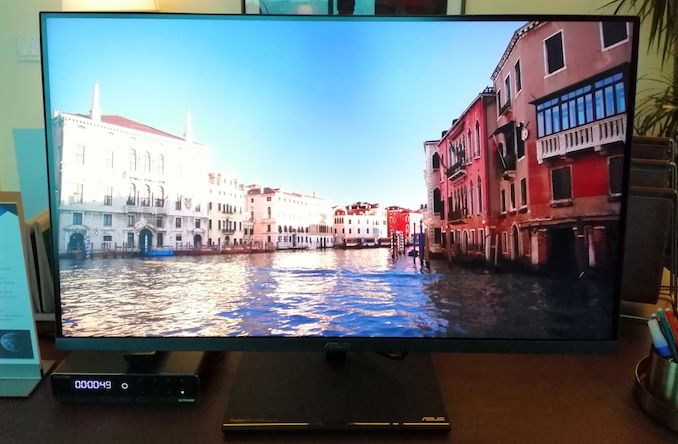
As far as connectivity is concerned, the monitor has one DisplayPort capable of DCI-4K with 4:4:4 chroma subsampling at 50/60 Hz, two Thunderbolt 3 ports capable of the same capability (and supporting daisy chaining), as well as an HDMI 2.0 input capable of DCI-4K with 4:2:2 at 50/60 Hz.

ASUS plans to launch its ProArt PA2UCX officially this Spring, but the company does not specify when exactly. Meanwhile, it should be noted that it takes ASUS a long time to finalize its high-end monitors. Traditionally, the manufacturer does not pre-announce MSRP of the display, but since we are talking about a 32-inch LCD with a unique 1000-zone Mini LED-based FALD, it will cost thousands of dollars.Specifications of the ASUS ProArt Mini LED Display ProArt PA32UCX Panel 32" IPS Native Resolution 3840 × 2160 Maximum Refresh Rate 60 Hz Response Time unknown Brightness 1200 cd/m² (typical) Contrast high Viewing Angles 178°/178° horizontal/vertical HDR HDR10, HLG Backlighting Mini-LED-based 1000-zone FALD Pixel Pitch 0.1845 mm² Pixel Density 138 ppi Display Colors 1.07 billion Color Gamut Support DCI-P3: 98%
Adobe RGB: ?
Rec. 2020: 80%
sRGB: ?Aspect Ratio 16:9 Stand Hight, Tilt, and Swivel adjustable Inputs 1 × DisplayPort
2 × Thunderbolt 3
1 × HDMI 2.0USB Hub ? Launch Date Spring 2019
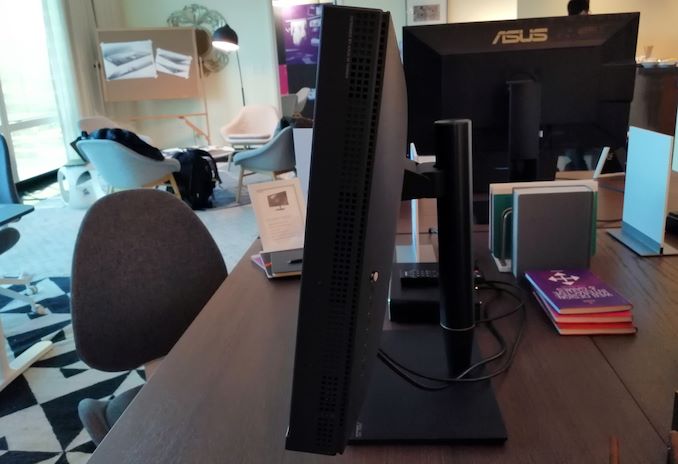
Related Reading:
- ASUS ProArt PA32U Display: 4K, 1000 Nits Brightness, 95% DCI-P3, 85% Rec. 2020
- ASUS Unveils ProArt PQ22UC OLED Monitor: 4K, 99% DCI-P3, 0.1 ms Response Time
- EIZO Announces ColorEdge Prominence CG3145: 4096x2160, 98% P3 and HDR10
Source: ASUS
More...
-
01-14-19, 09:43 AM #9057
Anandtech: Corsair One Pro i180: New Flagship Mini-PC with i9-9920X and RTX 2080 Ti
Corsair has expanded its Corsair ONE line of mini-PCs, aiming for the higher end of the market. The Corsair One Pro i180 is equipped with Intel’s 12-core high-end desktop processor as well as NVIDIA’s GeForce RTX 2080 Ti graphics card, which is why the manufacturer calls it a compact workstation. In addition, the company has also introduced new variants under the Corsair One i140 and Corsair One i160 naming system.
Corsair launched its first own-brand Corsair One systems in early 2017. The concept of the system was to take advantage of the company’s know-how: Corsair knows how to build cases with good ventilation, it produces SFF PSUs, it produces custom liquid cooling, and other components. With the Corsair ONE, the company managed to create a Mini-ITX platform capable of handling high-performance components. This year at CES, the system is getting a refresh and expanding into several different variants.
The dark grey Corsair One Pro i180 is based on ASRock’s X299E-ITX/ac motherboard, Intel’s 12-core Core i9-9920X processor and NVIDIA’s GeForce RTX 2080 Ti graphics card. The CPU and the GPU are cooled using separate AIO implementations, dissipating a total of ~400 W of thermal power, which is a notable achievement as we are talking about a 12-liter PC.
Being aimed at prosumers, the Corsair One Pro i180 comes equipped with 32 GB of quad-channel DDR4-2667 memory, a 960 GB M.2 PCIe/NVMe SSD, and a 2 TB 2.5-inch HDD. As for connectivity, the compact PC features everything that the X299E-ITX/ac motherboard and NVIDIA’s GeForce RTX 2080 Ti have, including Intel’s Wireless-AC 8265 802.11ac + Bluetooth 4.2 controller, two GbE ports (driven by Intel’s I219-V and I211-AT), six USB 3.0 Type-A connectors, one USB 3.1 Gen 2 Type-C port, one USB 3.1 Gen 2 Type-C receptacle, a TRRS audio jack, and four display outputs (three DisplayPort 1.4 and one HDMI 2.0b).
It is important to note that due to customer feedback, the front panel for this version of the Corsair One has been moved to the bottom, rather than staying at the top.
Along with its top-of-the-line Corsair One Pro i180, the manufacturer also released its Corsair One i140 and Corsair One i160 systems. The One i140 is powered by Intel’s eight-core Core i7-9700K processor accompanied by NVIDIA’s GeForce RTX 2080, whereas the One i160 is based on Intel’s eight-core Core i9-9900K CPU paired with NVIDIA’s GeForce RTX 2080 Ti. Both PCs come with 32 GB of dual-channel DDR4-2667 memory, a 480 GB PCIe/NVMe, a 2 TB HDD, and I/O capabilities similar to those of the high-end HEDT machine.
Following the latest trends, all the new Corsair One PCs are equipped with programmable RGB LED bars to make them look attractive in the eyes of modern gamers.Specifications of Early-2019 Corsair ONE Gaming PCs Model Corsair One
Pro i180Corsair One
i160Corsair One
i140Product ID CS-9040001-NA CS-9020003-NA CS-9020004-NA CPU Core i9-9920X
12C/24T
3.5 GHz Base
4.4 GHz Turbo
165 WCore i9-9900K
8C/16T
3.6 GHz Base
5.0 GHz Turbo
95 WCore i7-9700K
8C/8T
3.6 GHz Base
4.9 GHz Turbo
95 WGPU GeForce RTX 2080 Ti
1350-1545 MHz
11 GB GDDR6
14 Gbps
250 WGeForce RTX 2080
1515-1710 MHz
11 GB GDDR6
14 Gbps
215 WCooling Custom closed-loop air+liquid cooling system DRAM 32 GB DDR4-2667 Motherboard mini-ITX, Z370 chipset mini-ITX, X299 chipset Storage SSD 480 GB NVMe 960 GB NVMe HDD 2 TB HDD, 5400 RPM PSU 600 W SFX 750 W SFX Warranty 2 years MSRP $5000 $3600 $3000
Now, time to talk about prices of the latest Corsair One PCs. The top-of-the-range Corsair One Pro i180 is going to cost a rather whopping $5,000 when it becomes available later this year. The “cheaper” Corsair One i140 and Corsair One i160 systems will be priced at $3,000 and $3,600 (respectively) when the manufacturer releases them in February. It is noteworthy that while Corsair’s first-gen One systems used to be priced in the range between $1,800 and $2,400, the new-gen One PCs will retail for $3,000 – $5,000, essentially competing against various ultra-high-end custom-built PCs and brands.
Related Reading:- Corsair ONE Gets Caffeinated: Now with Coffee Lake
- Corsair’s ONE SFF PCs Get Upgraded: GeForce GTX 1080 Ti, 32 GB of RAM, NVMe SSD
- CORSAIR ONE Gaming PC Released
- Corsair’s Bulldog 2.0 Gets Kaby Lake-Compatible Z270 Motherboard, New Cooler
Source: Corsair, Images from Tom's Hardware
More...
-
01-14-19, 09:43 AM #9058
Anandtech: AMD Comments on Threadripper 2 Performance and Windows Scheduler
Users may have been following Wendell from Level1Tech’s battle with researching the reasons behind why some benchmarks have regressed performance on quad-die Threadripper 2 compared to dual-die configurations. Through his research, he found that this problem was limited to Windows, as cross-platform software on Linux did not have this issue, and that the problem was not limited just to Threadripper 2, but quad-die EPYCs were also affected.
At the time, most journalists and analysts noted that the performance was lower, and that the Linux/Windows differences existed, but pointed the finger at the reduced memory performance of the large Threadripper 2 CPUs. At the time, Wendell discovered that removing CPU 0 from the thread pool, after the program starts running, it actually regained all of the performance loss on Windows.
After some discussions about what the issue was exactly, I helped Wendell with some additional testing, by running our CPU suite through an affinity mask at runtime to remove CPU 0 from the options at runtime. The results were negative, suggesting that the key to CPU 0 was actually changing it at run time.
After this, Wendell did his testing on an EPYC 7551 processor, one of the big four-die parts, and confirmed this was not limited to just Threadripper – the problem wasn’t memory, it was almost certainly the Windows Scheduler.
'Best NUMA Node' and Windows Hotfix for 2-NUMA
The conclusion was made that in a NUMA environment, Windows’ scheduler actually assigns a ‘best NUMA node’ for each bit of software and the scheduler is programmed to move those threads to that node as often as possible, and will actually kick out threads that also have the same ‘best NUMA node’ settings with abandon. When running a single binary that spawns 32/64 threads, every thread from that binary is assigned the same ‘best NUMA node’, and these threads will continually be pushed onto that node, kicking out threads that already want to be there. This leads to core contention, and a fully multi-threaded program could spend half of its time shuffling around threads to comply with this ‘best NUMA node’ situation.
The point of this ‘best NUMA node’ environment was originally meant to be for running VMs, such that each VM would run in its own runtime and be assigned different ‘best NUMA nodes’ depending on what else was currently on the system.
One would expect this issue to come up in any NUMA environment, such as dual processors or dual-die AMD processors. It turns out that Microsoft has a hotfix in place in Windows for dual-NUMA environments that disables this ‘best NUMA node’ situation. Ultimately at some point there were enough dual-socket workstation platforms on the market that this made sense, pushing the ‘best NUMA node’ implementation down the road to 3+ NUMA environments. This is why we see it in quad-die Threadripper and EPYC, and not dual-die Threadripper.
Wendell has been working with Jeremy from BitSum, creator of the CorePrio software, in developing a way of soft-fixing this issue. The CorePrio software now has an option called ‘NUMA Disassociator’ which probes which software is active every few seconds and adjusts the thread affinity while the software is running (rather than running an affinity mask which has no affect).
This is a good temporary solution for sure, however it needs to be fixed in the Windows scheduler.
AMD Comments On The Findings
There have been questions about how much AMD/Microsoft know about this issue, who they are in contact with, and what is being done. AMD was happy to make some comments on the record.
AMD stated that they have support and update tickets open with Microsoft’s Windows team on the issue. They believe they know what the issue is, and commends Wendell for being very close to what the actual issue is (they declined to go into detail). They are currently comparing notes with Bitsum, and actually helped Bitsum to develop the original tool for affinity masking, however the ‘NUMA Disassociator’ is obviously new.
The timeline for a fix will depend on a number of factors between AMD and Microsoft, however there will be announcements when the fix is ready and what exactly that fix will affect performance. Other improvements to help optimize performance will also be included. AMD is still very pleased with the Threadripper 2 performance, and is keen to stress that for the most popular performance related tests the company points to reviews that show that the performance in rendering is still well above the competition, and is working with software vendors to push that performance even further.
Relevant Links:- Level1Techs 2990WX Written Analysis
- Level1Techs YouTube Video
- AnandTech’s CPU0 Affinity Mask Testing
- AnandTech's 2990WX Review
- AnandTech's 2970WX Review
More...
-
01-14-19, 10:33 AM #9059
Anandtech: CES 2019: ASUS' Chromebook Tablet CT100 for Education
Designed primarily for education use, the Chromebook Tablet CT100 has a rubberized chassis and is powered by an ARM-based SoC, essentially bringing together rugged design and low cost. As the device can run applications developed for Android and Chrome OS, the CT100 may become a viable option for those planning to buy an inexpensive Android tablet.
The ASUS Chromebook Tablet CT100 is powered by the Rockchip OP1 processor which packs two high-performance Arm Cortex-A72 cores, four energy-efficient Cortex-A53 cores, Arm Mali-T864 graphics, supports hardware decode/encode for Ultra-HD 4K video, and has a number of Chrome OS-specific optimizations brought-in by Google and designed to improve user experience. The tablet is equipped with 4 GB of LPDDR3-1866 memory and 32 GB of eMMC storage (which can be enhanced with a microSD card), which is standard for education-oriented Chrome OS-based devices.
The Chromebook Tablet CT100 has a rather typical 9.7-inch touch-enabled LCD with a 2048×1536 resolution at 264 pixels per inch covered by tempered glass. Imaging capabilities of the slate include a 2 MP user-facing webcam as well as a 5 MP camera on the back. As for connectivity, the tablet features 2×2 802.11ac Wi-Fi as well as Bluetooth 4.1 controlled by the Qualcomm QCA6174 silicon. It has a USB 3.0 Type-C connector for data, charging, and display connectivity, as well as a TRRS audio jack for headsets. Battery capacity is rated as a 35 Wh lithium-polymer battery, a standard capacity for 9.7-inch tablets.
Moving on to dimensions. The tablet comes in a reinforced and rubberized chassis, so it is slightly bigger and thicker (at 9.9 mm) than typical slates with a 9.7-inch display. The good thing about the CT100 is that it is rated for drops up to 1 meter, which is a typical height of tables and desks. As for mass, the tablet weighs 568 grams.
The ASUS Chromebook Tablet CT100 will be available in the coming months. While formally the CT100 is aimed at schools and other education institutions, it will most likely make its way to Amazon and other retailers.The ASUS Chromebook Tablet CT100 CT100 Display Diagonal 9.7" Resolution 2048×1536 PD 264 PPI SoC Rockchip OP1
2 × ARM Cortex-A72
4 × ARM Cortex-A53
ARM Mali-T864 graphicsRAM 4 GB Storage 32 GB Wi-Fi 2×2 802.11ac Wi-Fi module (Qualcomm QCA6174) Bluetooth BT 4.1 USB 1 × USB Type-C (5 Gbps) for data, charging, display output Other I/O 2 MP webcam, 5MP rear camera,
TRRS connector for audio, speakers, microphoneDimensions (H × W × D) 9.9 × 238.8 × 172.2 mm
0.38 × 9.4 × 6.77 inchesWeight 538 grams | 1.18 pounds Battery Life 35 Wh Price ?
Related Reading- Google Announces the Pixel Slate: A 12.3-Inch x86-Based Chrome OS Tablet
- Acer Announces Chromebook Tab 10: A Tablet Running Google’s Chrome OS
- ASUS Launches the 360º Chromebook Flip C213: 11.6-inch Apollo Lake, Starting $349
- Lenovo Launches 2-in-1 Flex 11 Chromebook: Quad-Core SoC, 4 GB RAM, from $279
Source: ASUS, Top Image from LaptopMag
More...
-
01-14-19, 01:42 PM #9060
Anandtech: CES 2019: GIGABYTE Aorus RGB Memory Hits DDR4-4000 with SK Hynix ICs
GIGABYTE last year entered the memory market with its Aorus RGB and GIGABYTE-branded DIMMs, designed for enthusiasts. To some degree the project was experimental with conservative DDR4-2666 and DDR4-3200 speed bins built on Samsung B-die ICs, typically known for much higher performance. At CES the company introduced faster Aorus RGB DIMMs that not only top at DDR4-4000, but do so using SK Hynix C-die ICs..
In the near future GIGABYTE plans to add DDR4-3600 at CL18 and DDR4-4000 16 GB (2 × 8 GB) dual-channel kits to its Aorus RGB Memory lineup. The modules feature regular 1.35 V voltage for enthusiast-class DIMMs, they are also outfitted with XMP 2.0-enabled SPDs for one-click overclocking beyond JEDEC specifications, and they are equipped with aluminum heat spreaders with addressable RGB lights.
The most interesting information about the new memory sticks is that they are based not on Samsung’s 8 Gb B-die memory chips that are traditionally used for enthusiast-class DIMMs, but on SK Hynix’s 8 Gb C-die DDR4 devices. C-Die DRAMs from SK Hynix have existed for at least a couple of years and numerous shipping DDR4-3600 (and lower) DIMMs use these chips. Meanwhile, GIGABYTE seems to be the first supplier of memory modules which has managed to overclock them to a DDR-4000 speed for a retail product.
Overclocking potential of SK Hynix C-die-based DDR4-3600 and DDR4-4000 DIMMs beyond their stock speeds is something that remains to be seen, but with new Aorus RGB Memory modules hitting the market shortly, we will certainly learn more about it in the coming months.
Related Reading- Gigabyte Enters Memory Market with AORUS RGB LED RAM
- CES 2019: TeamGroup And ASRock Release Phantom Gaming Branded Memory and SSD
- CES 2019: Thermaltake Unveils Its WaterRAM RGB Liquid Cooled DDR4-3200 Memory
- Your Highness: G.Skill Trident Z Royal, Bling Factor 11
- SK Hynix Reveals DDR4-3200 Memory Chips with 4 Phase Clocking
Source: GIGABYTE
More...
Thread Information
Users Browsing this Thread
There are currently 5 users browsing this thread. (0 members and 5 guests)




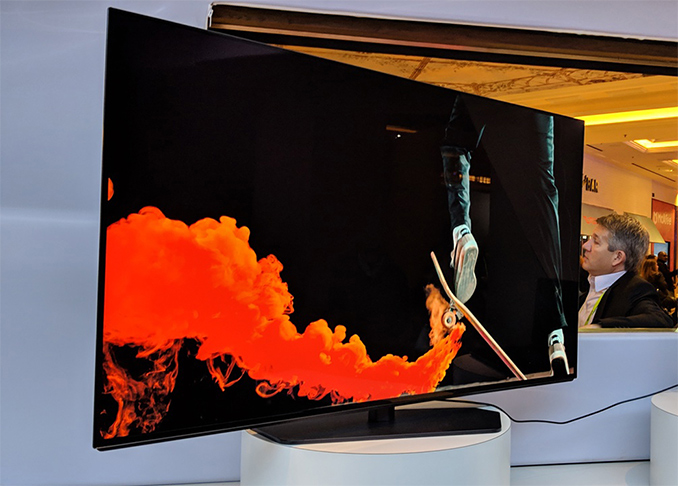
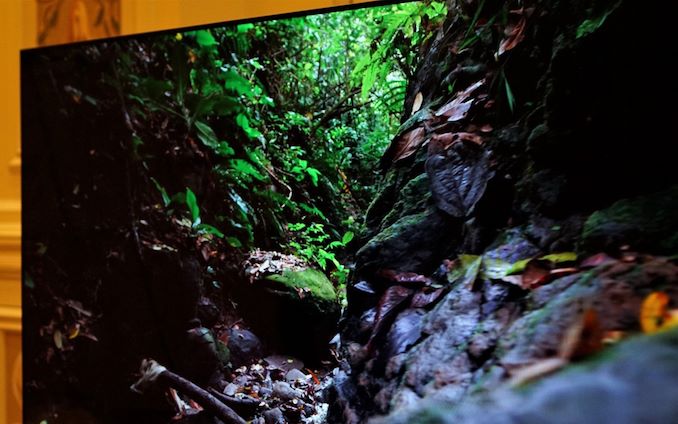
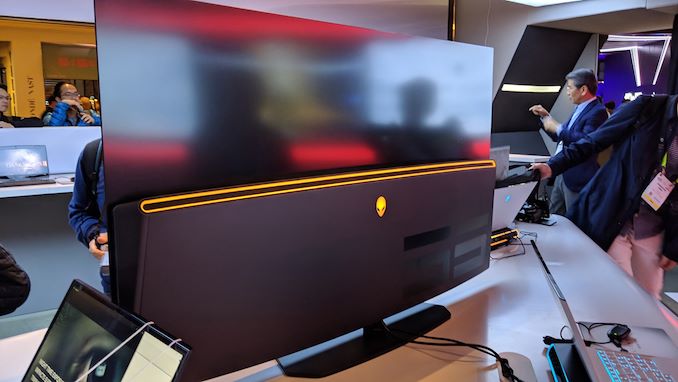


 Quote
Quote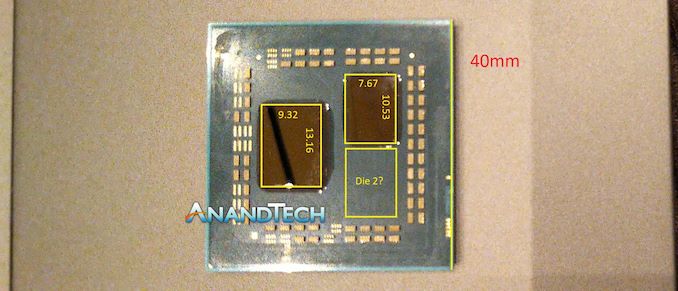


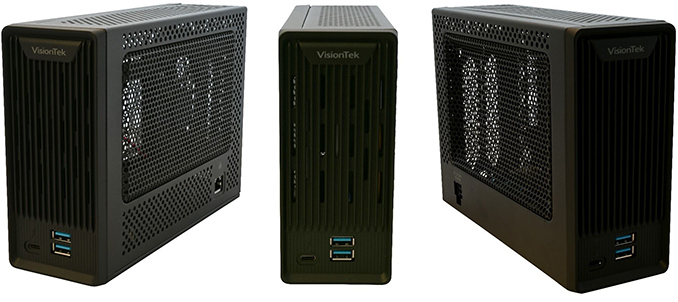
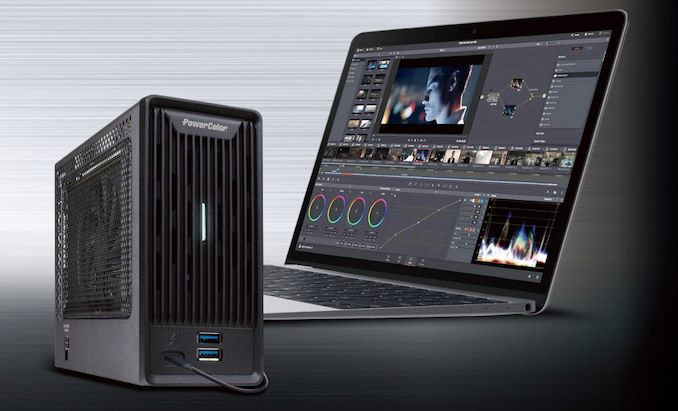
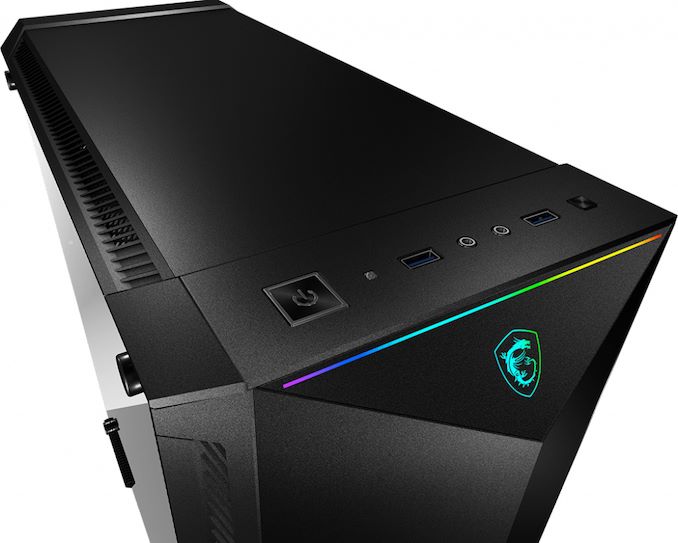
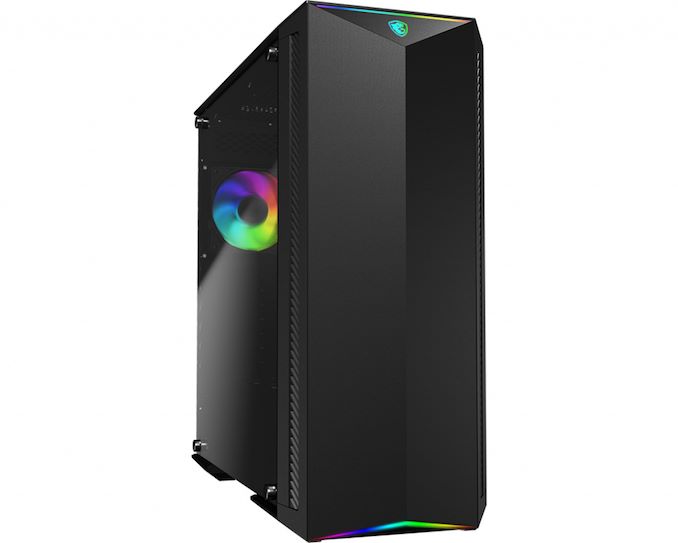
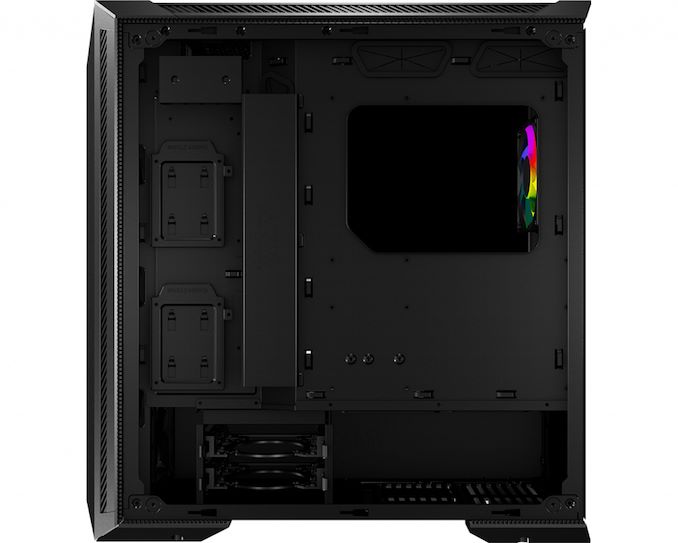
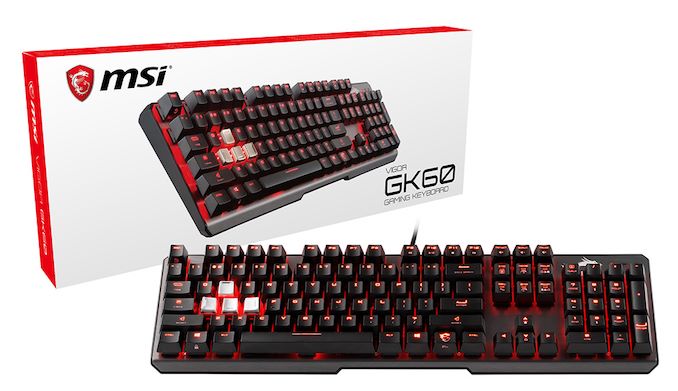
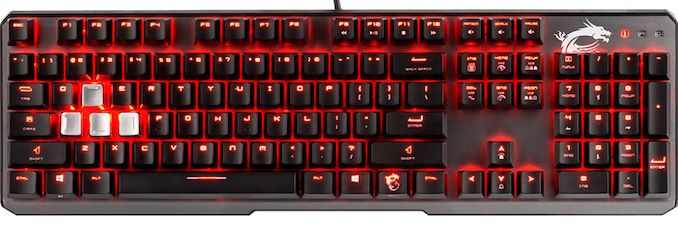
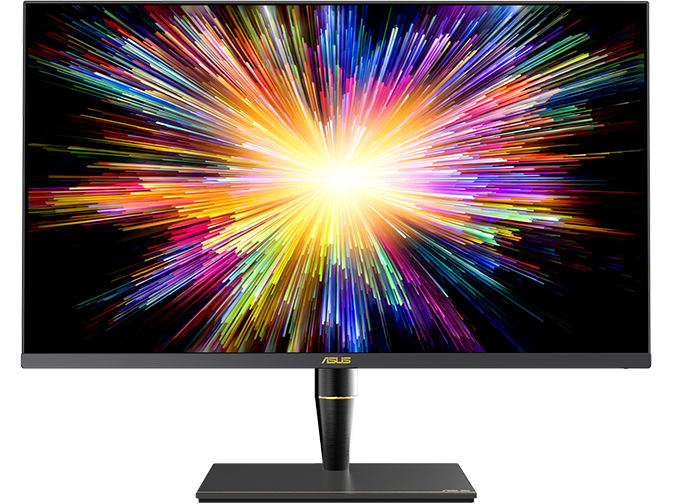
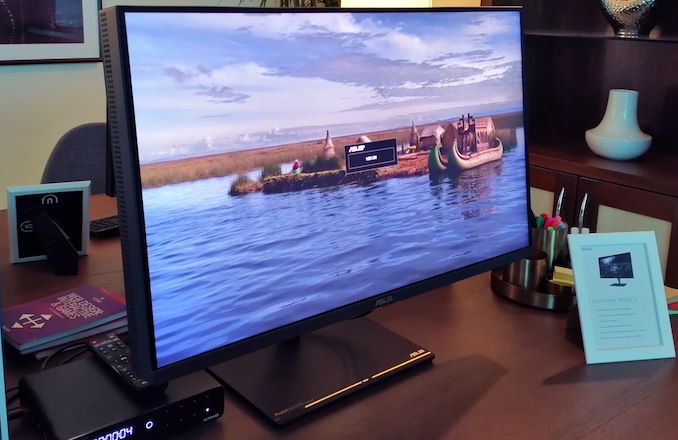
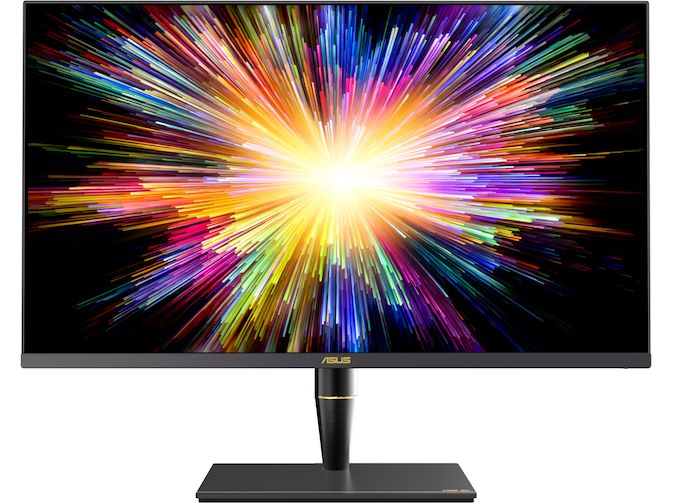
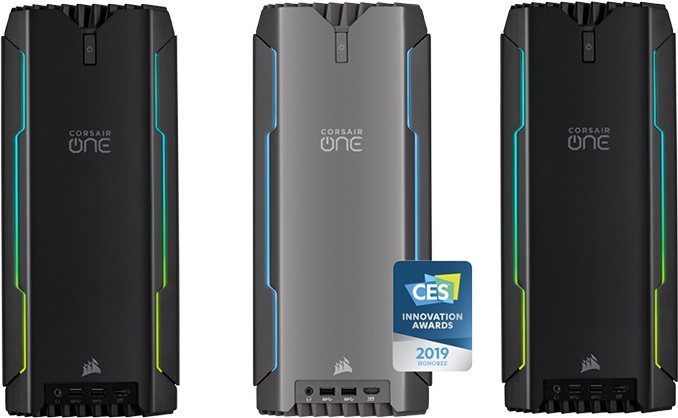
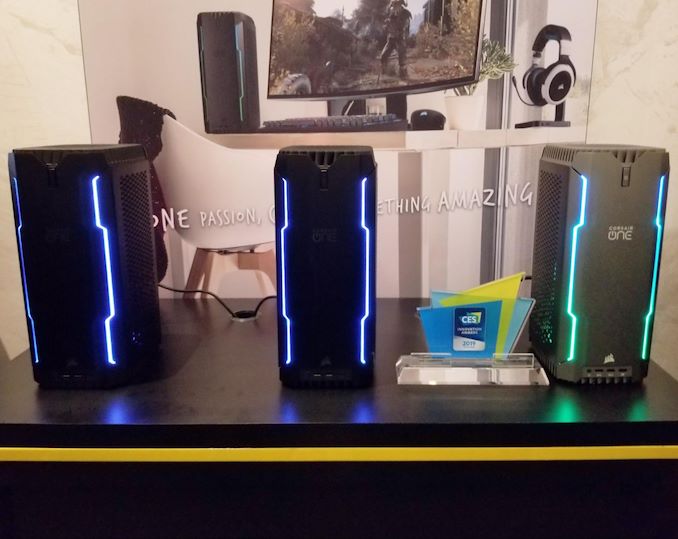
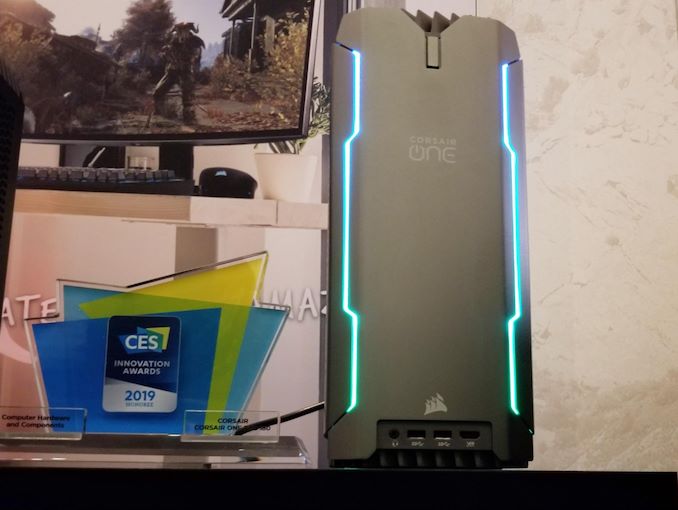
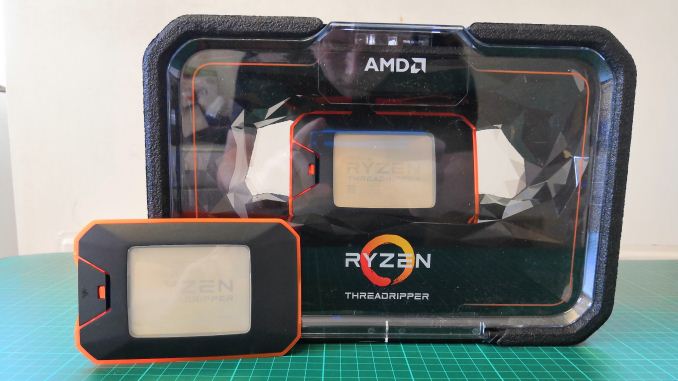
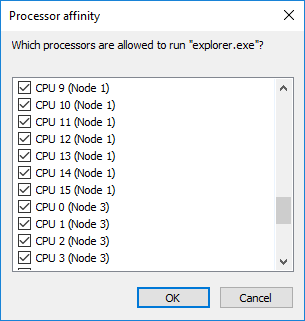

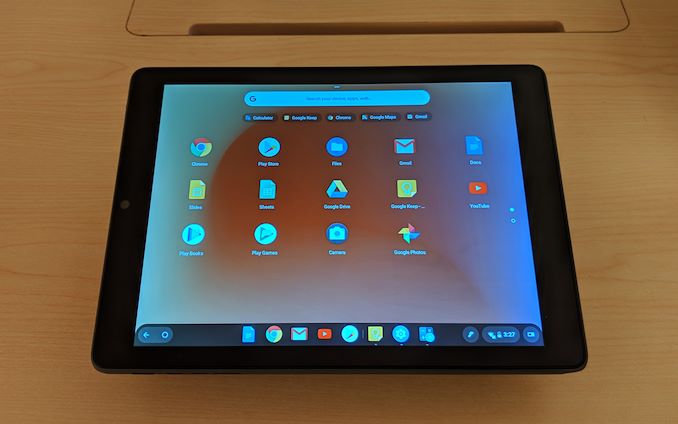

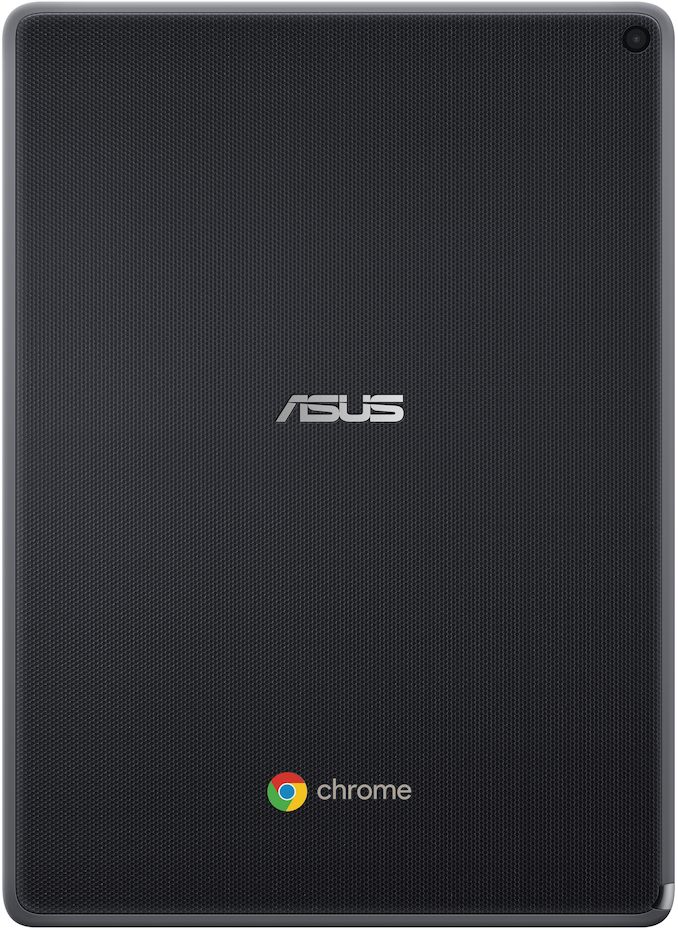


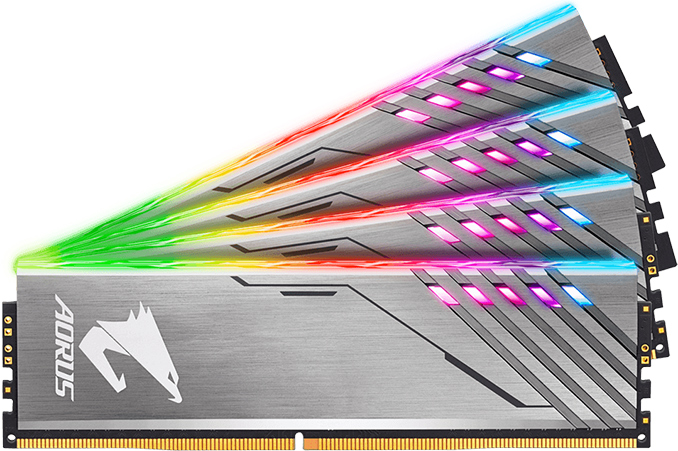
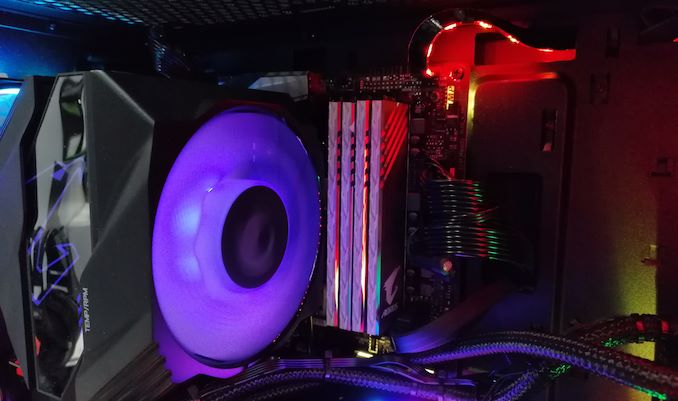
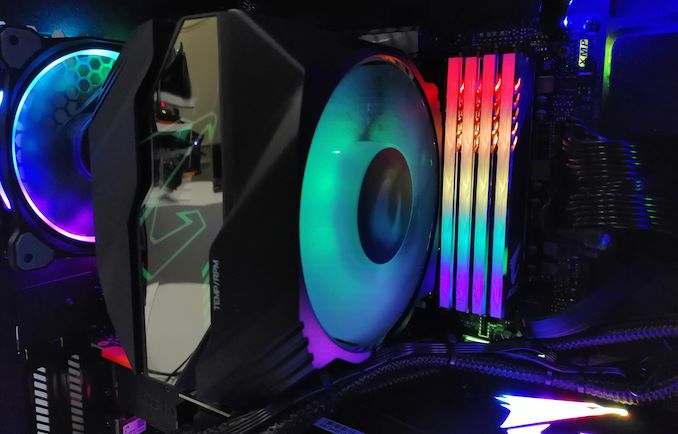
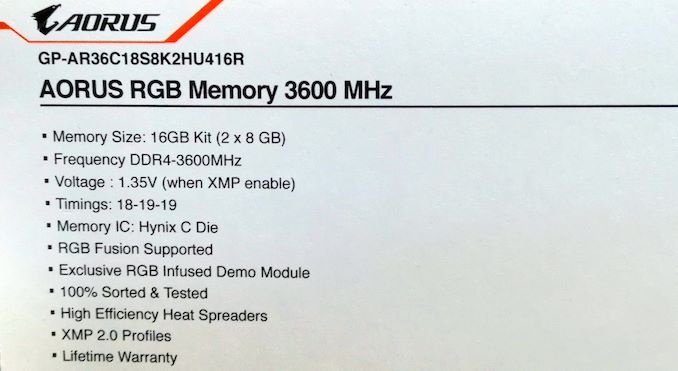
















Bookmarks